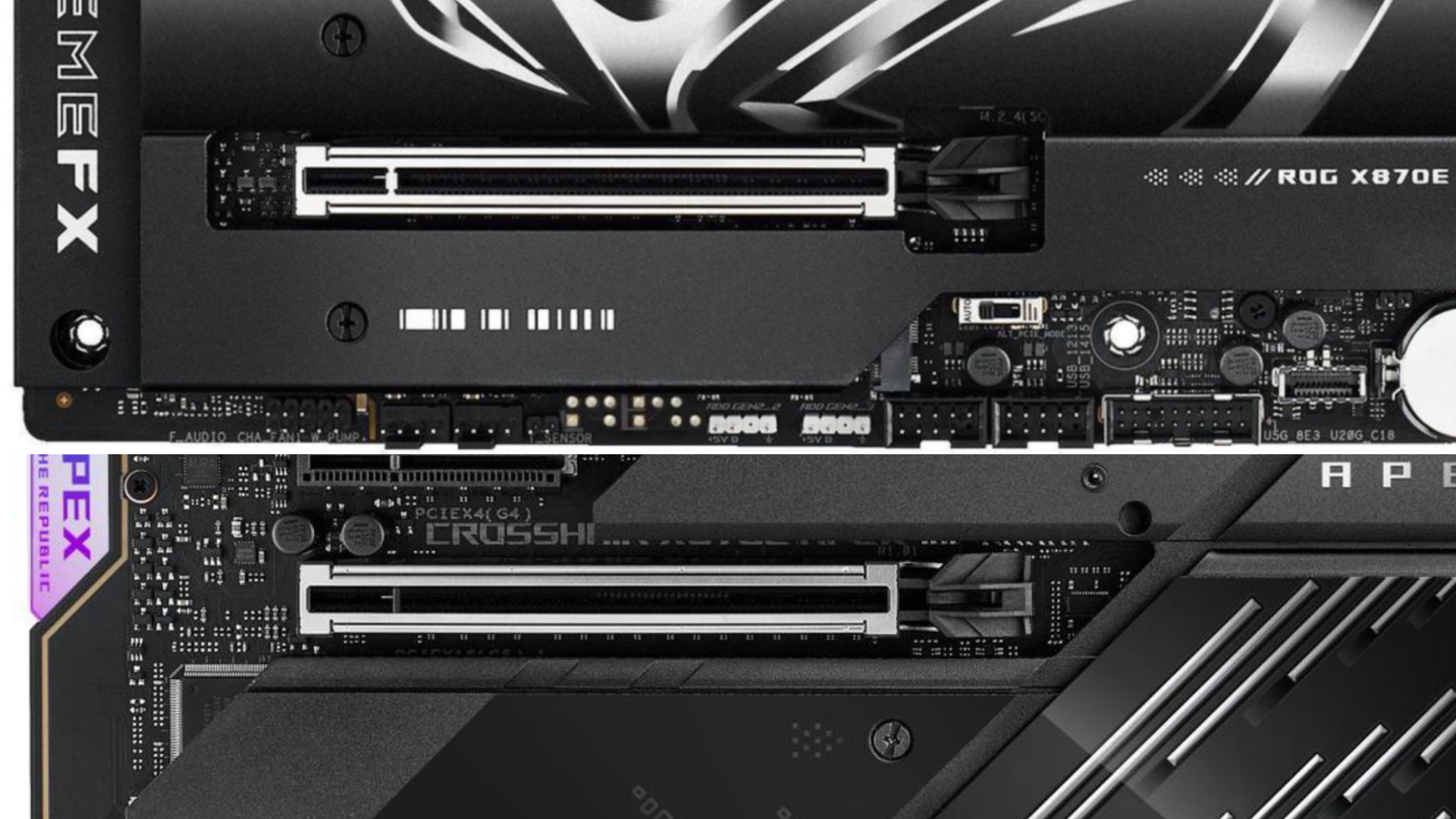
Asus found itself facing accusations of a GPU-damaging connector design at the start of this year, thanks to claims that its Q-Release Slim PCI slot system could potentially scrape GPU pins over repeated use. Now it appears Asus may have quietly changed the design of the system, as a motherboard has been spotted with a distinctly different slot mechanism in newly-released product photos.
As spotted by Uniko's Hardware, product photos of the Asus ROG Apex X870E motherboard show what looks like a Q-Release Slim design without the metal frame between the power and data lanes, which was thought to potentially contribute to early wear (via Videocardz).
x870e apex, c10a, $749 on neweggus preorder nowthanks to newegg we can see the real mobo that hasnt available on the asus product page.the q release slim slot got revised particularly on the bracket between peg and x16.it is still button-less, the metal piece inside the slot… pic.twitter.com/KqvUQXxi3pMarch 13, 2025
At the time of the claims, Asus released a statement in which it denied that Q-Release Slim slots caused much issue to a card's function:
"In our internal testing and evaluation of the extremely small number of cases reported, we found no damage to the motherboard or graphics card that would affect functionality and or performance. However, it is important to emphasize that any type of PCIe add in card will exhibit signs of usage and wear marking after 60 continuous insertions and removals. Additionally, if the installation and removal are not performed according to the manufacturer's recommendations, the likelihood of scratches and or wear may increase.
"Despite this, we have found no impact on the functionality of either the graphics card or the motherboard."
However, Asus China's customer support was spotted offering motherboard replacements for owners of any Asus motherboard equipped with PCIe Q-Release Slim slots. It noted that it would revise the design, too.
ASUS China “PCIe Q-Release Slim” Solution1. Compensation of 200 JD E-cards(~200 RMB)2. Free replacement of motherboards with improved “PCIe Q-Release” design.3.Additional compensation or warranty assistance will be provided for damage to the graphics card.@unikoshardware pic.twitter.com/QhsjPmGqoXFebruary 6, 2025
And now we have a slot design that looks significantly different from the previous iteration. Videocardz claims that early review sample pictures show the same motherboard with the older Q-Release design, suggesting it was revised quite late into the release process.
Regardless, the claims here have always been about increased wear over multiple GPU installation and removal cycles, not extensive damage, and those claims were not particularly widespread. It's possible that Asus has simply changed the socket design at the last minute to prevent further allegations of undue wear, even if it didn't find any evidence for it in its internal testing.
Still, it looks like Asus may have deemed the issue worthy of changes regardless, so it's something worth looking out for if you plan on buying an Asus motherboard in the near future.







